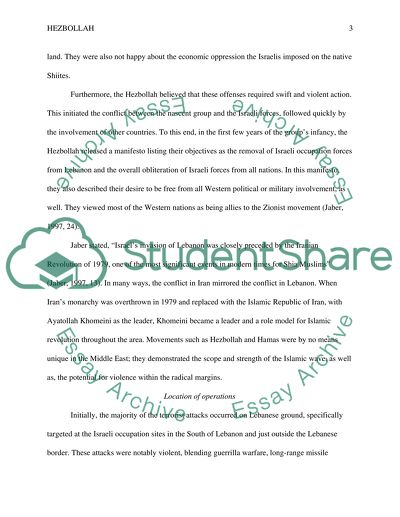Cite this document
(Hezbollah: Party of God Assignment Example | Topics and Well Written Essays - 3919 words, n.d.)
Hezbollah: Party of God Assignment Example | Topics and Well Written Essays - 3919 words. Retrieved from https://studentshare.org/sociology/1599730-terrorist-organization-research-and-report-on-hizballah-party-of-god
Hezbollah: Party of God Assignment Example | Topics and Well Written Essays - 3919 words. Retrieved from https://studentshare.org/sociology/1599730-terrorist-organization-research-and-report-on-hizballah-party-of-god
(Hezbollah: Party of God Assignment Example | Topics and Well Written Essays - 3919 Words)
Hezbollah: Party of God Assignment Example | Topics and Well Written Essays - 3919 Words. https://studentshare.org/sociology/1599730-terrorist-organization-research-and-report-on-hizballah-party-of-god.
Hezbollah: Party of God Assignment Example | Topics and Well Written Essays - 3919 Words. https://studentshare.org/sociology/1599730-terrorist-organization-research-and-report-on-hizballah-party-of-god.
“Hezbollah: Party of God Assignment Example | Topics and Well Written Essays - 3919 Words”, n.d. https://studentshare.org/sociology/1599730-terrorist-organization-research-and-report-on-hizballah-party-of-god.


